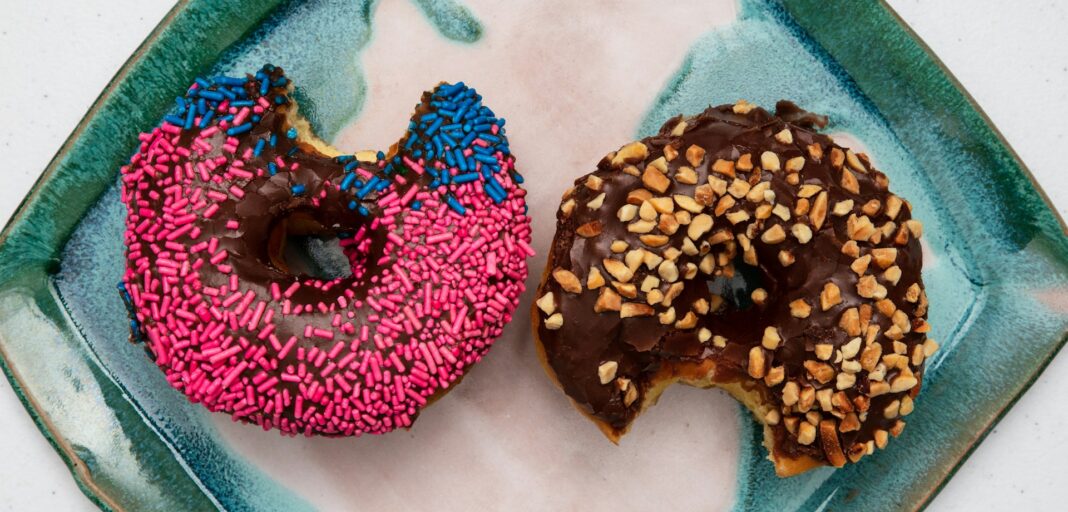Understanding why we overeat unhealthy foods has been a long-standing mystery. And while we recognize that food acts as a strong reinforcer that guides our food decisions, the precise circuitry in our brains behind this is unclear. A study headed by scientists at Monell Chemical Senses Center has now unravelled internal neural wiring that reveals separate fat and sugar craving pathways, and suggests the concerning result, that combining these pathways overly triggers our desire to eat more than usual.
The newly reported research provides new insights into what controls “motivated” eating behavior, suggesting that a subconscious internal desire to consume a diet high in both fats and sugar has the potential to counteract dieting efforts. The findings may also offer up a viable therapeutic target for obesity. “Food is nature’s ultimate reinforcer,” said Monell research lead Guillaume de Lartigue, PhD. “But why fats and sugars are particularly appealing has been a puzzle. We’ve now identified nerve cells in the gut rather than taste cells in the mouth are a key driver. We found that distinct gut-brain pathways are recruited by fats and sugars, explaining why that donut can be so irresistible.”
De Lartigue and colleagues reported on their results in Cell Metabolism, in a paper titled “Separate gut-brain circuits for fat and sugar reinforcement combine to promote overeating.” In their paper the team concluded, “These data provide additional support that there are separable circuits for fat and sugar reinforcement and suggest that foods rich in both fats and sugars combine to additively recruit both sugar and fat reward circuits, promoting higher levels of motivation to consume obesogenic diets.”
Food is a powerful natural reinforcer that guides feeding decisions, the authors wrote. “The sharp rise in global obesity rates has been attributed to changes in the food environment that promote overconsumption of palatable calorie-dense foods that are rich in fats and sugars.” The vagus nerve sends internal sensory information from the gut to the brain about the nutritional value of food. But, the molecular basis of the reward in the brain associated with what we eat has been incompletely understood. “Fats and sugars both increase vagal firing in nerve recording experiments,” they noted, “however, it remains unknown whether different subpopulations of vagal neurons sense specific macronutrients.”
For their reported study the team used cutting-edge technology to directly manipulate fat or sugar neurons in the vagus nerve system in mice, and demonstrated that both types of neurons cause a dopamine release in the brain’s reward center. They discovered two dedicated vagus nerve pathways: one for fats and another for sugars. These circuits, originating in the gut, relay information about what we have eaten to the brain, setting the stage for cravings. Their data, they noted, “… clearly indicate that fats and sugars recruit separate peripheral vagal circuits that convey information about the type, and possibly concentration, of nutrients from the gut to the brain.”

But the story doesn’t end there. The team also found that simultaneously activating both the fat and sugar circuits creates a powerful synergy. “The activation of separate fat or sugar circuits can increase motivated feeding behavior, but strikingly, the combination of fats and sugars synergize to supra-additively increase the activity of neurons along the gut-reward circuit, increase dopamine release, and promote overeating independently of calories,” they stated. “It’s like a one-two punch to the brain’s reward system,” said de Lartigue. “Even if the total calories consumed in sugar and fats stays the same, combining fats and sugars leads to significantly more dopamine release and, ultimately, overeating in the mice.”
This finding sheds light on why dieting can be so challenging. Human brains may be subtly programmed to seek out high-fat, high-sugar combinations, regardless of conscious efforts to resist. “The communication between our gut and brain happens below the level of consciousness,” said de Lartigue. “We may be craving these types of food without even realizing it.”
The authors further explained, “Our data support the idea that increased caloric intake of Western diet results from hijacking interoceptive circuits that separately reinforce fats and sugars. Because interoceptive signaling occurs below the level of consciousness, the motivation to consume obesogenic diets may occur without cognitive perception.”
The team predicts that this line of research offers hope for future development of anti-obesity strategies and treatments. Targeting and regulating gut-brain reward circuits could offer a novel approach to curb unhealthy eating habits. “…manipulating interoceptive gut-reward circuits may provide a viable therapeutic target for treating obesity by promoting voluntary reduction in the consumption of obesogenic diets,” they concluded. “Understanding the wiring diagram of our innate motivation to consume fats and sugars is the first step towards rewiring it,” added de Lartigue. “This research unlocks exciting possibilities for personalized interventions that could help people make healthier choices, even when faced with tempting treats.”



